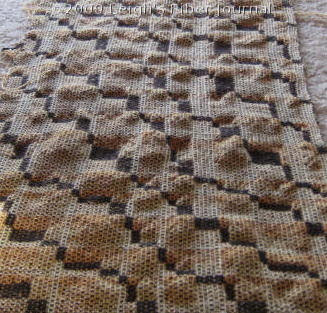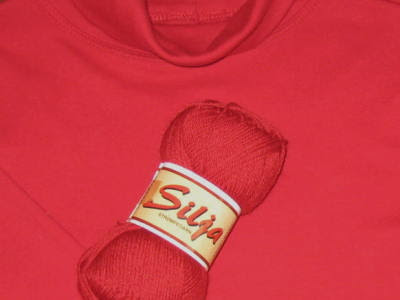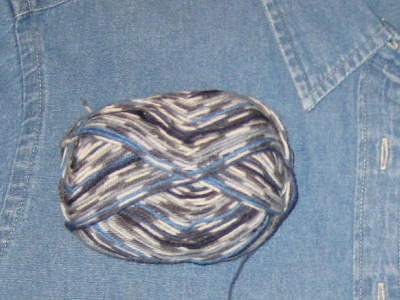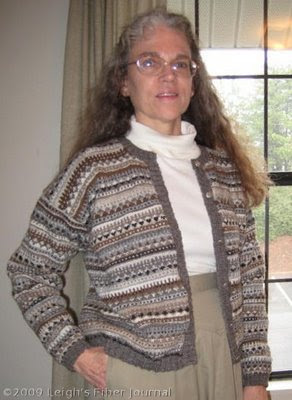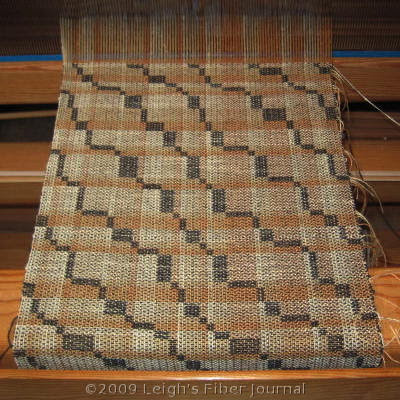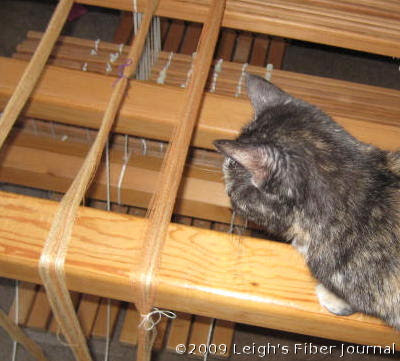As of this afternoon, here are the results for the Catzee's Cloth poll:
- I love it! Leave it as is - 43 votes (57%)
- Yuk! Iron it quick! - 33 votes (43%)
One consideration is planned usage. Though it looks like a scarf, I wove it for cutting up into exchange samples. Consequently all the weft ends are hanging out of the selvedges rather than being woven in (I changed weft color with every treadling block.) I need a total of twenty samples for the exchange, but it won't take all of it. While I was weaving away, I thought about using leftovers for a vest.
I like this pattern.....
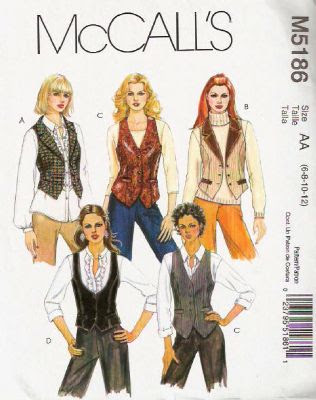 Maybe version B with a black velvet collar?
Maybe version B with a black velvet collar?With that end in mind, I decided to go ahead and press a section of the bumpy cloth to see what could be done with it. Here's how that turned out .....

It smoothed out nicely. Bettina did make a good point in the comments however, that it will likely want to bubble up again after washing. I don't figure that samples will be washed, and my vests are more likely to get dry cleaned, so that may not be a problem.
Lynette brought up another good point, that of visual competition between the shrinkage texture and the color pattern. For this sample, the focal point is the tabby-like stripes against a tortoiseshell-like background. (See Inspired By Catzee.) The bubbles and dimples from the differential shrinkage should probably be a design feature on its own.
So I've come up with a plan. I'm going to press out Catzee's Cloth, and then experiment with differential shrinkage on a scarf. I will still weave it in summer and winter, just in simpler colors.
The interesting thing about all this is that I never expected to take this direction in my weaving. But thanks to this happy accident and all your encouraging comments, it's a step I'm going to take nonetheless.
Related Posts:
Inspired By Catzee
An Unexpected Wrinkle
One Thing Leads To Another
Lynette brought up another good point, that of visual competition between the shrinkage texture and the color pattern. For this sample, the focal point is the tabby-like stripes against a tortoiseshell-like background. (See Inspired By Catzee.) The bubbles and dimples from the differential shrinkage should probably be a design feature on its own.
So I've come up with a plan. I'm going to press out Catzee's Cloth, and then experiment with differential shrinkage on a scarf. I will still weave it in summer and winter, just in simpler colors.
The interesting thing about all this is that I never expected to take this direction in my weaving. But thanks to this happy accident and all your encouraging comments, it's a step I'm going to take nonetheless.
© 29 March 2009 at http://leighsfiberjournal.blogspot.com
Related Posts:
Inspired By Catzee
An Unexpected Wrinkle
One Thing Leads To Another

